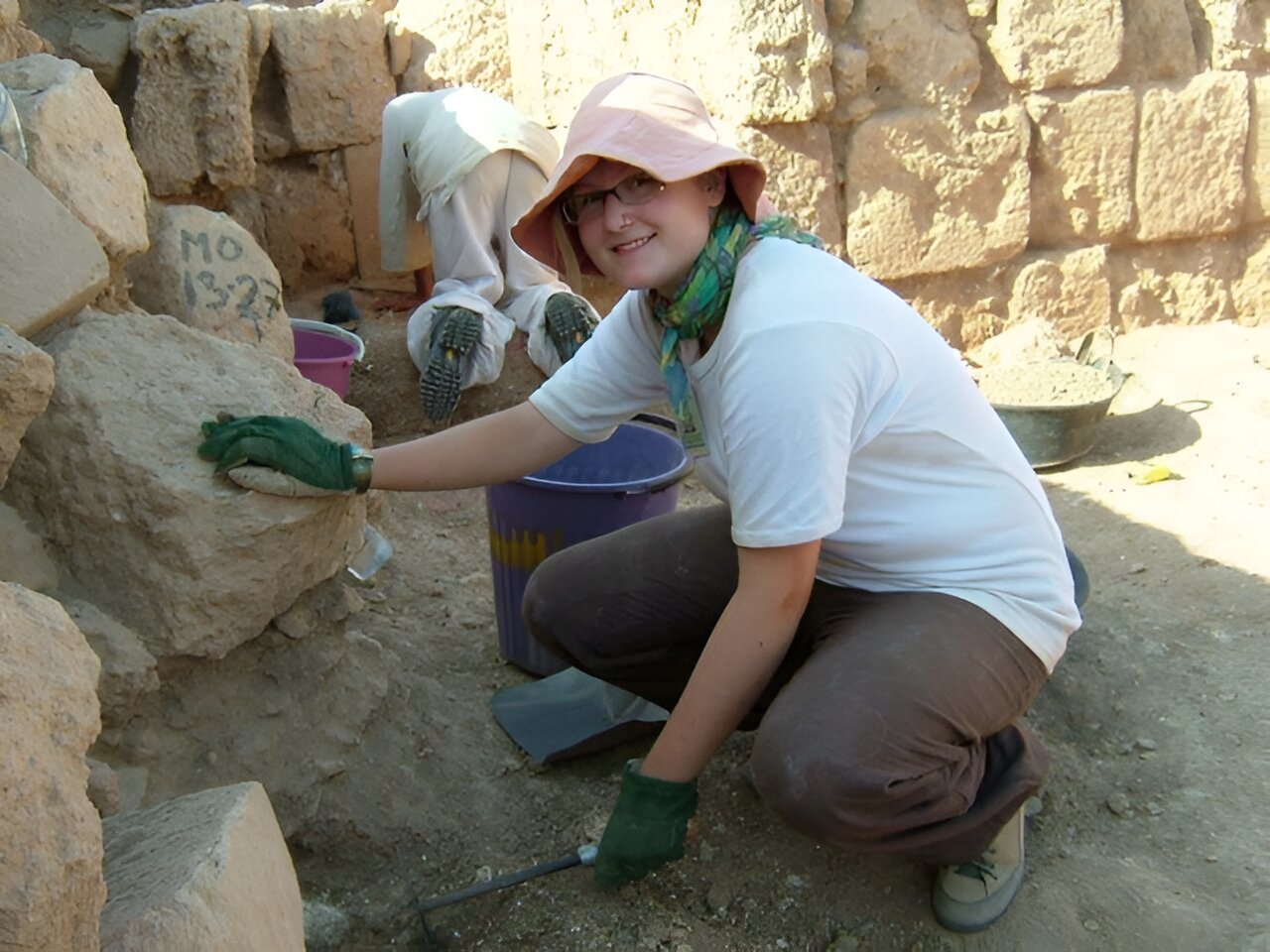Kalhu, also known as Nimrud, is an ancient Assyrian city located in Iraq’s Nineveh Governorate. The city covered an area of 890 acres and emerged as the capital of the Neo-Assyrian Empire during the reign of Ashurnasirpal II (883–859 BC).
Ashurnasirpal II constructed a large palace and numerous temples following a period of decline during the Bronze Age Collapse of the mid-11th to mid-10th centuries BC.

Numerous inscriptions found in the city have given researchers insights into the re-emergence of Kalhu, with one such inscription describing Ashurnasirpal II’s palace: “The palace of cedar, cypress, juniper, boxwood, mulberry, pistachio wood, and tamarisk, for my royal dwelling and for my lordly pleasure for all time, I founded therein. Beasts of the mountains and of the seas, of white limestone and alabaster I fashioned and set them up on its gates.”
During this period around 2,900-years-ago, a brickmaker prepared a clay brick for the palace construction, from which researchers from the University of Oxford have been able to extract and sequence ancient DNA by using a novel aDNA analysis.

The scientists managed to distinguish 34 separate taxonomic plant groups. Among these groups, Brassicaceae (cabbage) and Ericaceae (heather) stood out as the plant families with the highest number of sequences. Additional families that were represented included Betulaceae (birch), Lauraceae (laurels), Selineae (umbellifiers), and Triticeae (cultivated grasses).
The interdisciplinary group, consisting of assyriologists, archaeologists, biologists, and geneticists, managed to juxtapose their discoveries with contemporary botanical data from Iraq and historical Assyrian depictions of plants.
The mud composition of the brick was likely sourced from the nearby Tigris river, combined with substances such as chaff, straw, or animal dung. After moulding the brick into shape, it was then engraved with cuneiform writing and placed under the sun for drying. As a result of opting not to fire the brick and allowing it to dry naturally, this has contributed to the preservation of the genetic material trapped within the clay.
Dr Troels Arbøll from the University of Oxford, said: “‘Because of the inscription on the brick, we can allocate the clay to a relatively specific period of time in a particular region, which means the brick serves as a biodiversity time-capsule of information regarding a single site and its surroundings. In this case, it provides researchers with a unique access to the ancient Assyrians.”